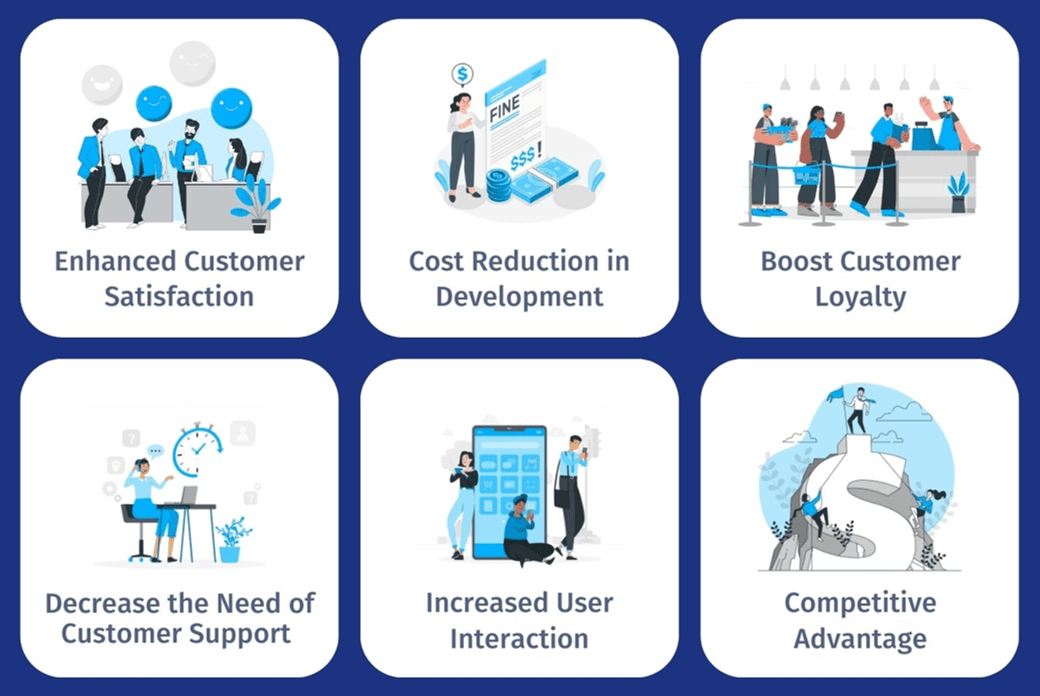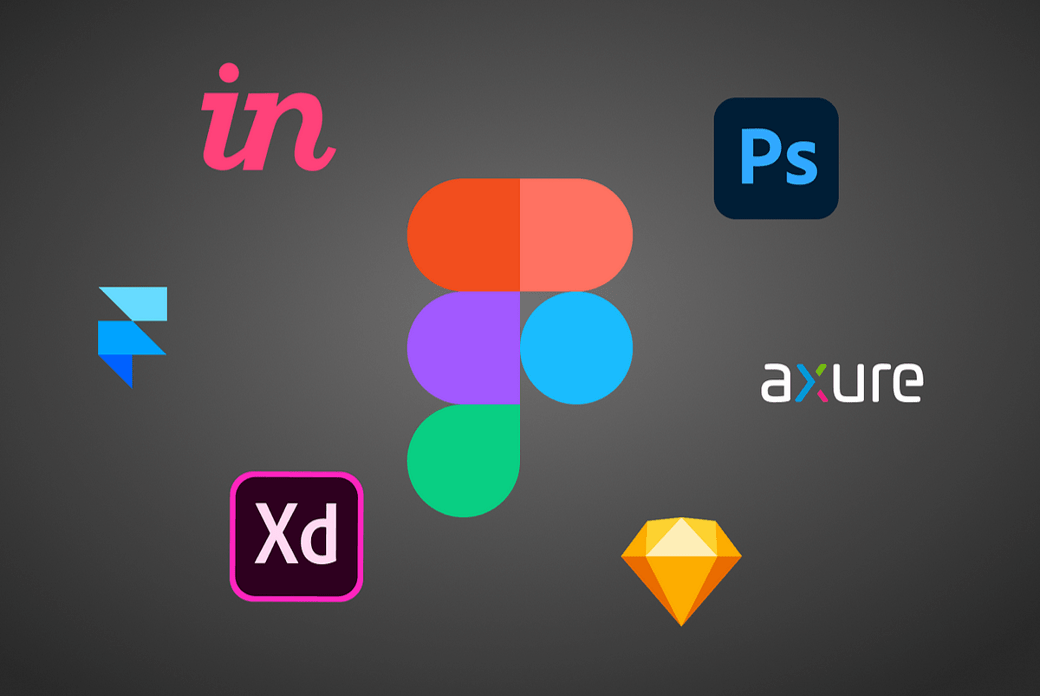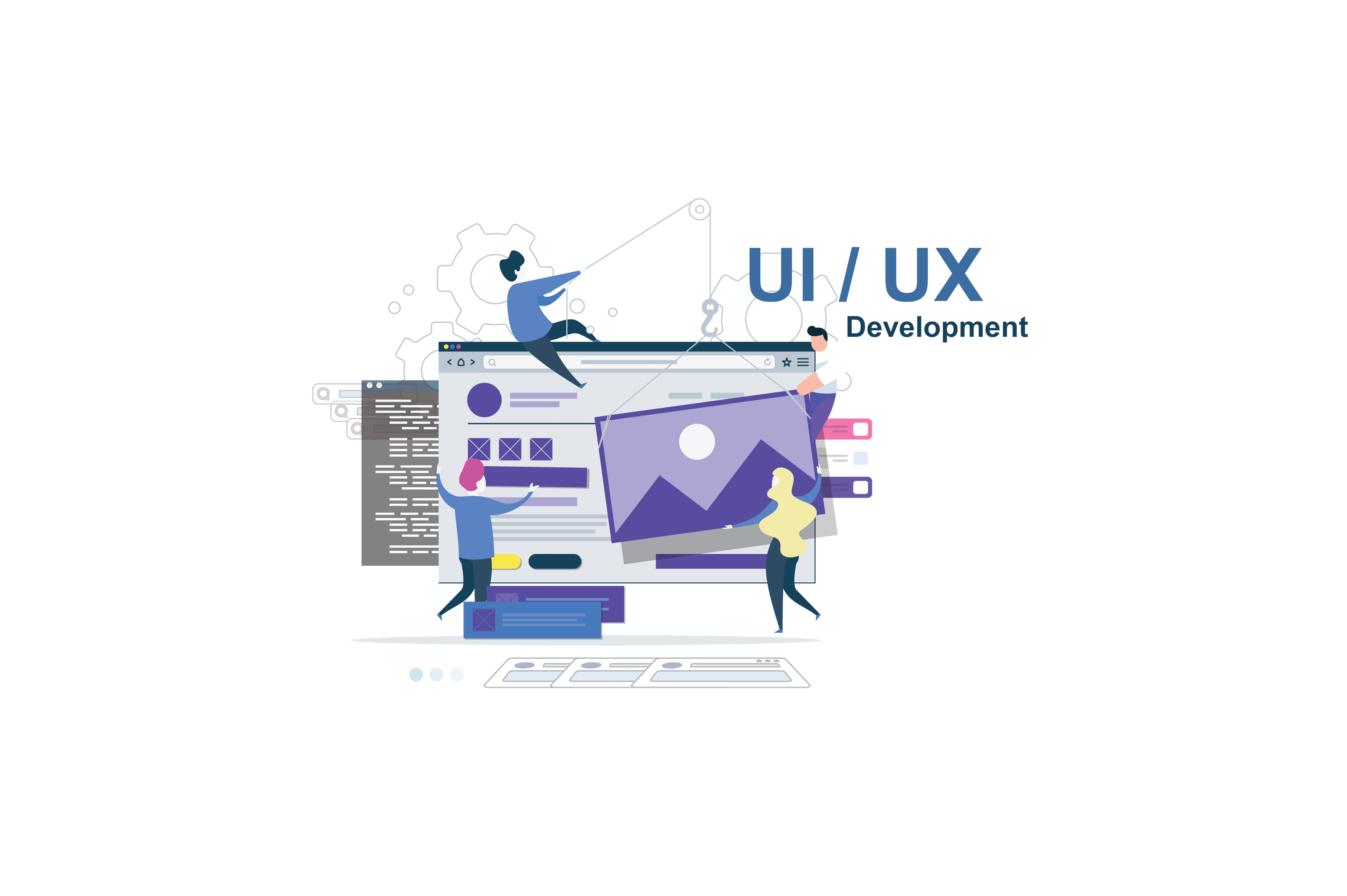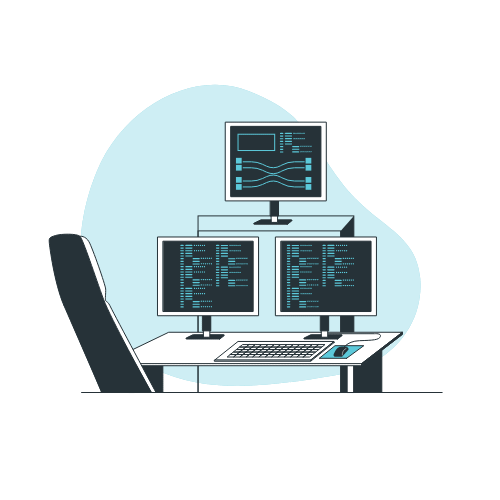In today’s fast-paced digital landscape, where user expectations continue to evolve, integrating User Experience Design (UXD) into the development process has become nothing short of a necessity. As the lines between success and failure in the digital realm become increasingly blurred, the ability to deliver exceptional user experiences stands out as a critical differentiator.
In this article, we delve into the world of user experience design and development, exploring the significance, strategies, and benefits of seamlessly blending these two essential elements.
Understanding the Basics of User Experience Design
Defining User Experience Design: At its core, User Experience Design (UXD) revolves around creating digital products that provide meaningful and enjoyable interactions for users. It’s more than just aesthetics; it encompasses usability, accessibility, and the overall experience a user has with a product or service.
“Good design is obvious. Great design is transparent.” — Joe Sparano
Core Principles of UXD: To understand UXD fully, we must grasp its key principles. These include usability, accessibility, consistency, feedback, and efficiency. Each principle contributes to the overall user experience and plays a crucial role in ensuring that users can effectively engage with digital products.
Evolution of UX Design: User experience design has come a long way, from being an afterthought to a central pillar in digital product development. The journey has transformed it from a niche discipline into a critical driver of success.
Real-world Example: Take Apple, for instance. Their obsession with delivering exceptional user experiences has catapulted them to the forefront of the tech industry, creating a devoted customer base in the process.
The Intersection of User Experience Design and Development
Traditionally, user experience designers and developers have occupied separate realms, leading to challenges that hinder the seamless delivery of outstanding user experiences. These challenges include miscommunication, delayed feedback, and budget. When user experience design and development are not in sync, the results can be disastrous.
Statistics Speak Volumes: According to recent research, 88% of online consumers are less likely to return to a site after a bad user experience. Additionally, 70% of online businesses fail due to bad usability.
Benefits of Integrating UX Design in Development

Embracing UX design in the development process offers a multitude of benefits, ultimately leading to improved product quality and user satisfaction.
Streamlined Development: Integration ensures that design and development teams work in tandem, eliminating bottlenecks and reducing development time.
Enhanced Product Quality: When UX is at the forefront of development, the end product is more likely to meet user expectations, leading to higher customer satisfaction.
Measurable ROI: Companies that prioritize UX design often see improved ROI, reduced bounce rates, and increased user engagement.
Fostering Innovation: A UX-focused development approach encourages innovation, setting your products apart from the competition.
Real-world Success Story: Airbnb’s commitment to user-centered design led to a 30% increase in bookings after a complete UX overhaul.
Strategies for Seamlessly Integrating UX Design and Development
In today’s digital ecosystem, where customer expectations are higher than ever before, ensuring a seamless integration of User Experience (UX) design and development is paramount. While we’ve touched on some strategies in the previous section, let’s delve deeper into this critical aspect and explore additional techniques and best practices.
1. Cross-functional Collaboration
Effective collaboration between UX designers and developers is the cornerstone of a successful integration. It’s not enough for these two teams to merely coexist; they must work together closely from the project’s inception to completion.
Regular Communication
To facilitate this collaboration, establish regular communication channels. Encourage designers and developers to hold frequent meetings to discuss project progress, potential challenges, and opportunities for improvement. This continuous dialogue ensures that everyone is aligned with the project’s goals and user-centric vision.
Shared Understanding
Creating a shared understanding of the project’s objectives is crucial. Conduct workshops or brainstorming sessions where designers and developers can collaborate on defining user personas, user journeys, and the overall project vision. This collaborative approach helps bridge the gap between design and development and fosters a sense of ownership among team members.
2. Agile Methodologies
Agile methodologies, such as Scrum or Kanban, are well-suited for projects that require iterative development and constant collaboration. Here’s how you can leverage agile methodologies for seamless UX design and development integration:
User Stories
Incorporate user stories into your project management process. These user-centric narratives describe a feature from the user’s perspective, helping both designers and developers understand the desired outcome and user expectations.
Iterative Development
Break the project into smaller, manageable tasks, or sprints. During each sprint, designers and developers work closely to implement, test, and iterate on specific features. This iterative approach allows for quick adjustments based on user feedback, reducing the likelihood of costly revisions later in the development process.
3. Design Thinking Workshops
Design thinking is a human-centered approach to problem-solving that encourages innovation and creative thinking. Hosting design thinking workshops can be a game-changer for integrating UX design and development effectively.
Empathy and Ideation
In the ideation phase of design thinking, both designers and developers are encouraged to empathize with the end-users. By putting themselves in the users’ shoes, they can identify pain points, challenges, and opportunities for improvement. This empathetic approach informs the design and development process, ensuring it addresses users’ real needs.
Prototyping and User Testing
Design thinking promotes rapid prototyping and user testing. During workshops, teams can create low-fidelity prototypes to visualize concepts quickly. These prototypes can then be tested with real users to gather feedback and validate design decisions. The insights gained from user testing inform development efforts, ensuring that the final product aligns with user expectations.
4. Prototyping and Iteration
Prototyping is a critical aspect of user-centered design. It allows for the visualization and testing of design concepts before they are fully implemented. Here’s how to make the most of prototyping and iteration in the integration process:
Low-fidelity Prototypes
Start with low-fidelity prototypes, which are quick, inexpensive, and easy to modify. These prototypes serve as a visual representation of design ideas and can be rapidly iterated based on feedback from both designers and developers.
User Feedback Loops
Establish user feedback loops throughout the design and development process. Invite users to provide feedback on prototypes, wireframes, and early product iterations. This direct input from users helps identify usability issues and areas for improvement, guiding both design and development efforts.
By expanding on these strategies and providing practical insights, we can better equip development teams to seamlessly integrate UX design into their workflow. Effective collaboration, agile methodologies, design thinking, and prototyping are key pillars in achieving a successful fusion of design and development, ultimately leading to exceptional user experiences and digital products that stand out in the market.
Tools and Resources for UX-Driven Development

To ensure a successful integration of UX design and development, the right tools are essential. Here are some indispensable tools and resources:
1. Wireframing and Prototyping Tools: Tools like Sketch, Figma, and Adobe XD help designers create interactive prototypes for testing.
2. User Testing Platforms: Services like UsabilityHub and UserTesting.com allow you to gather valuable user feedback.
3. Version Control Systems: Git and platforms like GitHub and GitLab help development teams manage code changes effectively.
4. Real-world Success Story: Slack’s user-centric approach to design was supported by an arsenal of tools, enabling it to create a highly intuitive collaboration platform.
Measuring the Impact of UX Integration
Ensuring the success of your UX-driven development efforts requires measuring the impact of these changes. Key metrics to consider include:
- User Satisfaction Scores (e.g., NPS): Track how satisfied users are with your product.
- Usability Testing Results: Regular usability testing helps identify pain points and areas for improvement.
- Conversion Rates and User Engagement: Monitor conversion rates and user engagement metrics to gauge the effectiveness of UX improvements.
- Real-world Success Story: Amazon attributes a 35% increase in revenue to its continuous focus on enhancing the user experience, as indicated by its conversion rate optimization efforts.
Navigating Digital Success through Integrated User Experience Design
In today’s digital landscape, the integration of User Experience Design (UX) into the development process is not just a choice but a necessity for success. This approach brings multifaceted benefits, including streamlined development, superior product quality, a measurable return on investment (ROI), and a distinct competitive edge.
Remember, great design transcends aesthetics; it’s about enhancing efficiency and functionality. By seamlessly incorporating UX design into your development process, you’re not only ensuring user satisfaction but also creating digital products that precisely meet customers’ needs.
Prioritizing the user, fostering collaboration, and implementing effective progress measurement are key elements on the path to achieving digital greatness. Embrace the transformative power of UX design to navigate the complexities of the digital world and deliver unparalleled value to your users.




